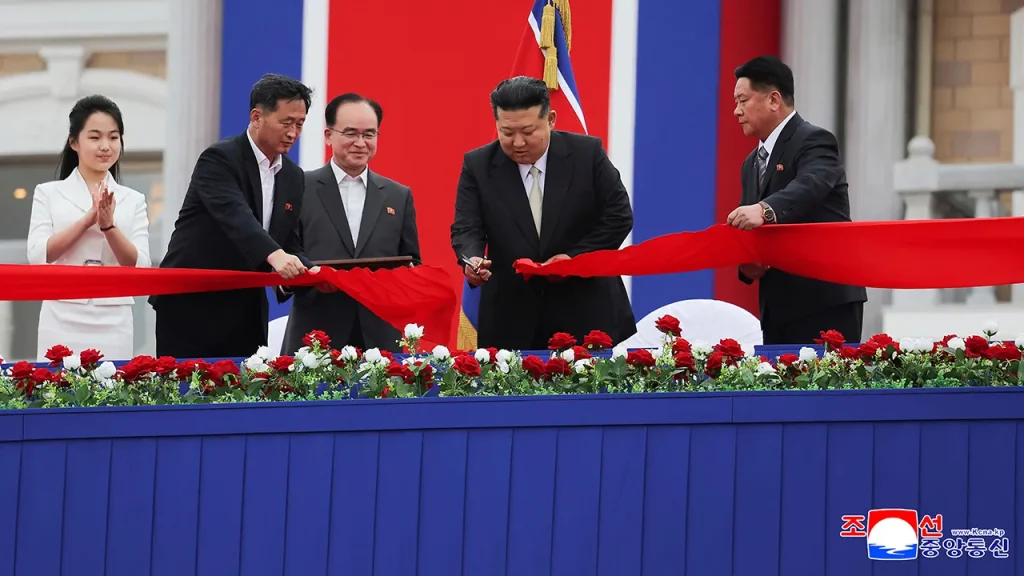North Korean leader Kim Jong Un inaugurated a new coastal tourist site on Tuesday, marking a significant milestone in the country’s efforts to promote tourism. The ceremony, held at the Wonsan-Kalma coastal tourist zone, was celebrated as a remarkable achievement and a foundational step towards revitalizing North Korea’s tourism industry. While the resort will open to domestic tourists next Tuesday, foreign visitors are not yet permitted due to ongoing pandemic restrictions and international tensions.
| Article Subheadings |
|---|
| 1) Overview of the Wonsan-Kalma Resort |
| 2) Domestic Tourism Plans |
| 3) Challenges in Attracting Foreign Tourists |
| 4) Implications for North Korea’s Economy |
| 5) Future Prospects for Tourism in North Korea |
Overview of the Wonsan-Kalma Resort
The Wonsan-Kalma coastal tourist zone is being developed as North Korea’s largest tourist site. The project, described by Kim Jong Un as “one of the greatest successes this year,” aims to enhance the country’s appeal as a travel destination. Official sources indicate that the resort will feature accommodations for up to 20,000 guests along North Korea’s picturesque east coast. Visitors will have access to a variety of activities, including swimming, recreational sports, and dining experiences. The opening ceremony was highlighted by the presence of both military officials and senior government figures, emphasizing the regime’s commitment to this initiative.
Domestic Tourism Plans
On June 24, 2025, the resort will commence operations for domestic tourists, as reported by state media. This significant move follows years of stringent restrictions due to the COVID-19 pandemic, which had severely impacted domestic and international travel. The government appears keen to boost local tourism first, prioritizing national interests over foreign clientele in the initial phase. This strategic decision is likely designed to build a market base and generate revenue that could later attract international tourists when restrictions are eased.
Challenges in Attracting Foreign Tourists
Despite the grand inauguration, the prospect of welcoming foreign visitors remains uncertain. Analysts believe that North Korea’s slow resumption of international tourism—hampered by the lingering effects of the pandemic, escalating tensions with the United States and South Korea, and concerns regarding negative portrayals by Western tourists—has raised red flags. While it is anticipated that the first foreign tourists will likely be from Russia, given the strengthening ties between the two countries, significant hurdles still exist. North Korea’s strict regulations and its reputation may deter other potential visitors, particularly from Western nations.
Implications for North Korea’s Economy
The launch of the Wonsan-Kalma resort symbolizes a broader strategy by Kim Jong Un to revive North Korea’s economy, which has suffered from prolonged sanctions and internal issues. Experts assert that heavy investments were made into this project, making it imperative for the government to recoup costs through tourism revenue. The state-run media has shed light on plans to construct additional tourist sites in different regions of the country, indicating that the regime views tourism as a crucial avenue for economic recovery. Success in this sector may also help to mitigate the challenges posed by sanctions and reveal a more open image to the outside world.
Future Prospects for Tourism in North Korea
Looking ahead, the development of North Korea’s tourism sector could usher in new opportunities for engagement with both local and international travelers. Analysts suggest that the resort may start receiving its first visitors from Russia due to their growing partnership with North Korea. Although South Korean and American tourists might face longer restrictions, the evolving geopolitical landscape could change future tourism dynamics. If the regime successfully navigates these complexities, tourism could evolve into a pivotal element for broader economic reforms and eventual normalization of international relations.
| No. | Key Points |
|---|---|
| 1 | The Wonsan-Kalma coastal resort is North Korea’s largest tourist site. |
| 2 | The resort opens for domestic tourists on June 24, 2025. |
| 3 | Foreign tourism is currently limited due to ongoing restrictions. |
| 4 | Heavy investments were made to ensure the success of the resort. |
| 5 | Tourism may play a key role in revitalizing North Korea’s economy. |
Summary
The inauguration of the Wonsan-Kalma coastal tourist zone marks a significant development in North Korea’s strategy to enhance its tourism sector. By targeting domestic tourists initially and planning to eventually attract international visitors, the country is laying down the groundwork for economic recovery and greater openness. As the geopolitical landscape remains fluid, the success of this venture could play a crucial role in North Korea’s future economic and diplomatic engagements.
Frequently Asked Questions
Question: What is the Wonsan-Kalma coastal tourist zone?
The Wonsan-Kalma coastal tourist zone is North Korea’s largest planned tourism site designed for recreational activities, accommodations, and dining for guests.
Question: When will the resort be open for tourists?
The resort will open for domestic tourists on June 24, 2025, although the timeline for foreign visitors remains unclear.
Question: What challenges does North Korea face in attracting foreign tourists?
Significant challenges include lingering COVID-19 restrictions, international tensions, and concerns about the potential negative portrayal of the regime by Western tourists.


